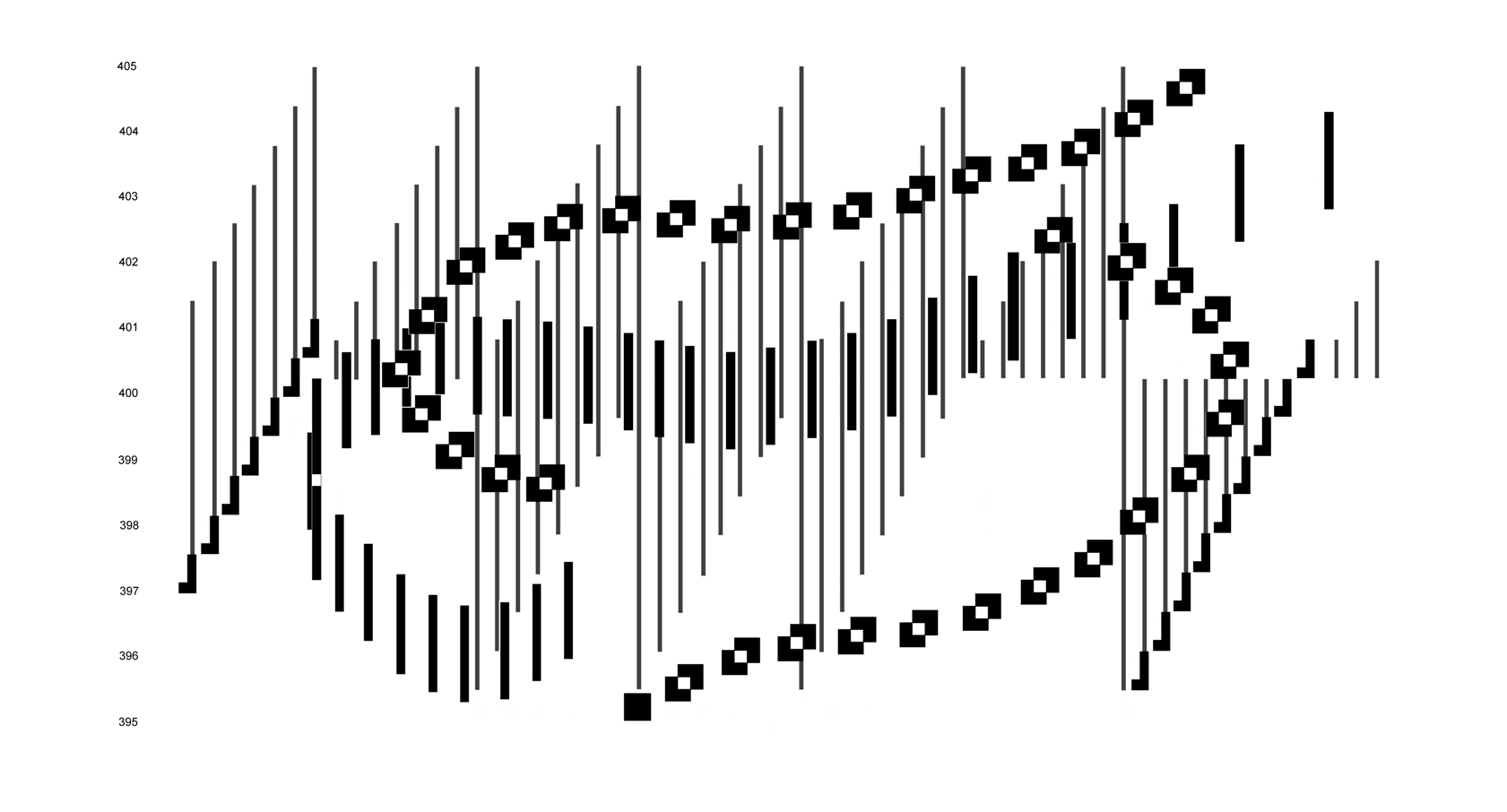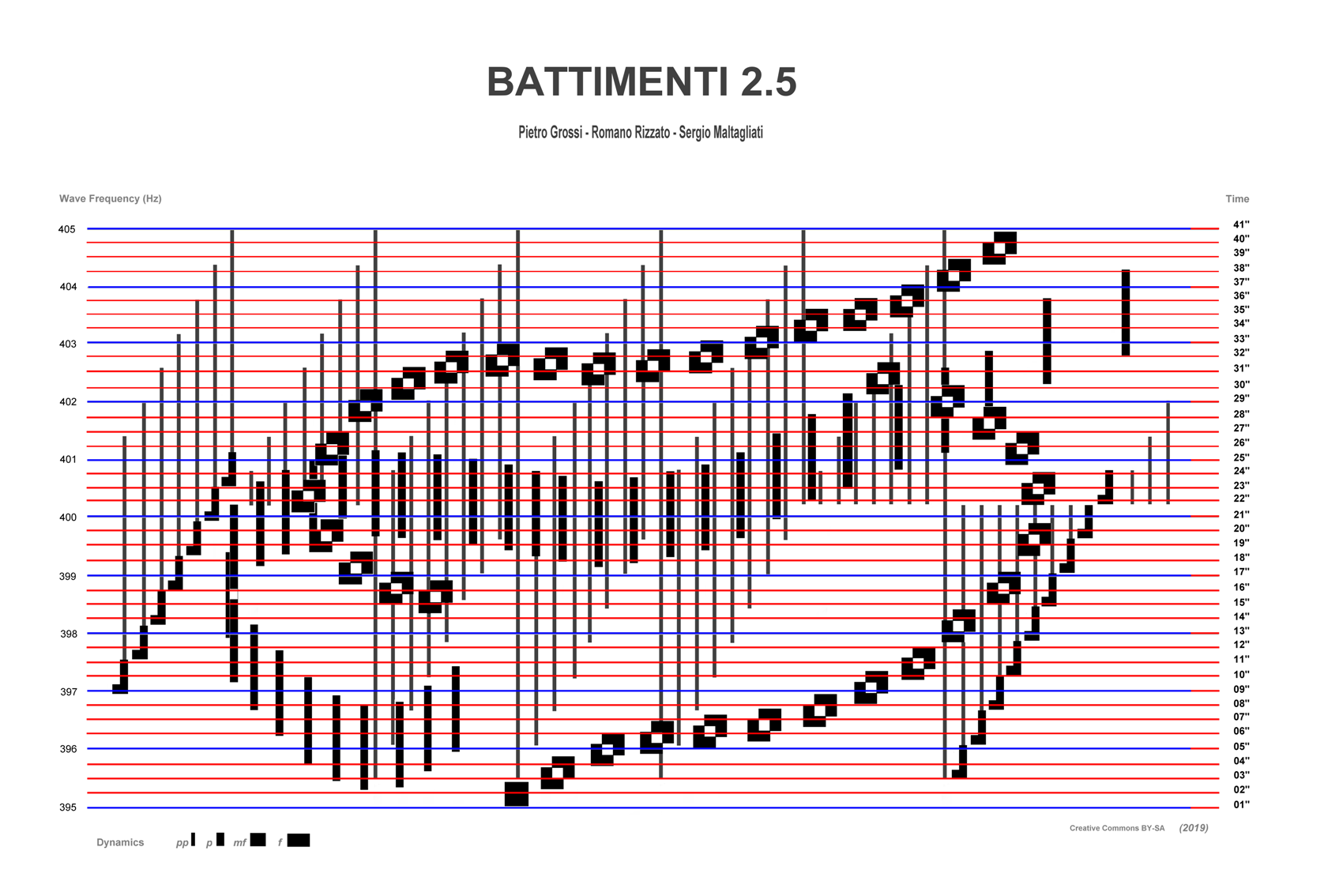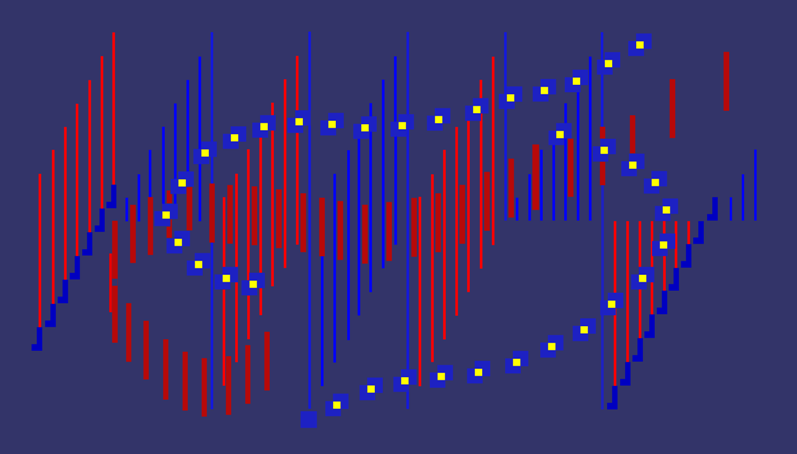GROSSI-RIZZATO-MALTAGLIATI ''BATTIMENTI 2.5'' Beat(acoustics)-musical score with frequencies of the original waves by Pietro Grossi |
|---|
 |
|---|
 |
|
In the early 60's the musician Piero Grossi conducted research of electronic music programmed using a common methodology with visual, kinetic and optical art. Art and music show - as he wrote in Marcatre in 1965 - the affinity in the "... reduction of means, in the concentration of the search for values with the least possible number of means. I see that the paintings use few colors; we use few sounds and try to get from them all the values they can give." Around 1965 Grossi recorded a repertoire of sound events at the Studio di Fonologia in Florence, including "Battimenti". Beats are a phenomenon of acoustic physics caused by the overlapping of one or more sound waves. The goal was to create a sort of "sound material" to be used for other compositions."Battimenti" can also be felt as a finished work, so much so that someone, like Albert Mayr, one of Grossi's major collaborators at the time of the studio "S 2F M" in Florence, pronounced defining "Battimenti" as one of the "most fascinating works of the last century"for maximum expressiveness even in the essentiality of sound. In the same 1960s, the painter Romano Rizzato created works that recall kinetic and optical art. In these works, the centrality is the movement and the use of a few colors, often only in black and white. Today, in this project <BATTIMENTI 2.5> Rizzato realizes a graphic work, inspired by his optical-kinetic period of the 60s-70s, but conceived with the sole purpose of being able (thanks to the collaboration of the musician Sergio Maltagliati) to be read as a musical score. Maltagliati uses 11 sound frequencies, from 395 to 405 (the same ones used by Grossi), combined as suggested by the calligraphy of the "score" of Rizzato". The resulting sound material is then modified by the software "autom@tedMusiC" Generative Music (version 2.5) which generates a fully automatic music that is always different. Our work was conducted with deep independence, but once the work is finished, we can glimpse a deep common relationship, as the kinetic art of Rizzato's pictorial work (by its nature) is projected from the "space" of the sheet to the movement in "time." (area generally reserved for music). Time became the container (for later use) of sounds or images or both together. It is an experience that we test every day when we see moving images in our reality and listen to sounds, without an apparent relationship.
Nei primi anni '60 il musicista Pietro Grossi, realizza ricerche di musica elettronica programmata, usando una metodologia comune con l'arte visiva cinetica e optical. Arte e musica presentano – come scrive nella rivista Marcatre nel 1965 – affinità nella “… riduzione dei mezzi, nella concentrazione di ricerca di valori con un minor numero di mezzi possibile. Vedo che i quadri usano pochi colori; noi usiamo pochi suoni e cerchiamo di ottenere da essi tutti i valori che possono dare.” Intorno al 1965 Grossi, registra un repertorio di eventi sonori presso lo Studio di Fonologia di Firenze, tra cui “Battimenti”. I battimenti sono un fenomeno di fisica acustica provocato dalla sovrapposizione di una o più onde sonore. Lo scopo era creare del “materiale sonoro” da utilizzare per altre composizioni. “Battimenti” possono essere ascoltati anche come opera compiuta, tanto che alcuni, come Albert Mayr, uno dei maggiori collaboratori di Grossi all'epoca dello studio “S 2F M” di Firenze, si sbilanciano definendo “ Battimenti ” come una delle opere “ più affascinanti del secolo scorso ” per la massima espressività pur nell'essenzialità del suono. In questi stessi anni '60 il pittore Romano Rizzato realizza lavori che richiamano all' arte cinetica e optical. In questi lavori la centralità è il movimento e l'uso di pochi colori, spesso solo bianco e nero. Oggi, in questo progetto <BATTIMENTI 2.5> Rizzato realizza un lavoro grafico, ispirato al suo periodo optical-cinetico degli anni '60-'70, concepito però, con il solo fine di poter (grazie alla collaborazione del musicista Sergio Maltagliati) essere letto come spartito musicale. Maltagliati usa 11 frequenze di suoni, da 395 a 405 (le stesse utilizzate da Grossi), combinate in base a quanto “suggerisce” la grafia della “partitura” di Rizzato. Il materiale sonoro ottenuto è poi modificato dal software “autom@tedMusiC” Generative Music software (versione 2.5) che genera in modo completamente automatico una musica sempre diversa. Il nostro lavoro è stato condotto con profonda indipendenza, ma a lavoro finito, si intravede una comune profonda relazione, in quanto il lavoro pittorico di arte cinetica (per sua natura) di Rizzato è proiettato dallo “spazio” del foglio al movimento nel “tempo”, (ambito generalmente riservato alla musica). Il tempo è diventato il contenitore (per una successiva fruizione) dei suoni o delle immagini o di entrambi insieme. E' una esperienza che viviamo quotidianamente quando vediamo nella nostra realtà immagini in movimento e ascoltiamo suoni, senza una apparente relazione.
|
 |
|||
|---|---|---|---|
''BATTIMENTI 2.5/2''
|
|||
|
|||
_________________________________________________
<BATTIMENTI 3.0> 15 digital visual variations (2023)
|
|---|